How to stop putting things off
The number of chronic procrastinators has quadrupled over the past 25 years. Why is there a procrastination epidemic?
Home » Productivity » How to reach flow state

We usually refer to flow as being “in the zone”. This mental state is characterized by focus, full concentration, and enjoyment of the activity at hand.
This idea is best summarized by Dr. Mihaly Csikszentmihalyi, the first modern psychologist to name and study Flow as “being completely involved in an activity for its own sake. The ego falls away. Time flies. Every action, movement, and thought follows inevitably from the previous one, like playing jazz. Your whole being is involved, and you’re using your skills to the utmost.”
Although this sounds like something along the lines of your usual self-help doctrine (which if that helps you, then rock on, no judgment), it is actually a theory dating back to the 1950’s that has held up under scientific scrutiny. In fact, Flow itself is considered a scientific term.
Individuals in a state of flow experience physiological changes as well as a number of effects that are highly beneficial in the workplace such as:
Levels of neurochemicals such as norepinephrine, dopamine, anandamide, serotonin, and endorphins increase. Along with these chemical changes, your prefrontal cortex starts to slow down while other parts of your brain speed up, leading to a constriction of focus, according to Steven Kotler, a leading journalist, and author on human performance in Flow states.
These neurochemicals, among other things, are responsible for:
Further, these chemicals are highly addictive. People who are able to enter Flow often become motivated to challenge their skills in the right way to enter flow time and again. This is why flow is referred to as the “source code” of intrinsic motivation.
As we said earlier, when we enter flow, some parts of the brain slow down, while others speed up. There is also an increase in subconscious thinking, which takes less energy and is faster, and a decrease in conscious thinking, which takes more energy and is slower. The prefrontal cortex, responsible for our self-awareness and sense of time, starts to shut down. That is why people in the flow state forget about themselves and lose track of time.
Our brain has limits on how much information it can process at a time which is around 110 bits of information per second. Each task we attempt to perform at one time uses up more and more of this finite resource. If you try and do too many things at once, it’s like having too many tabs open on your browser at one time.
So, as we can see, there are real neurological changes associated with flow states which lead to streamlined focus, creativity, and increased productivity.

Flow is a state of mind that virtually anyone can reach. In fact, it is a state that most of us enter into by accident on occasion. However, it most often occurs at the apex of great skill, concentration, and challenge.
Here is some other good news. Since psychologists started studying flow in the 1970’s, they have conducted tests over a massive number of different populations. From professional rock climbers to surgeons, to sheepherders in rural regions, almost all have shown an aptitude for flow. Moreover, they found that even people who have been diagnosed with ADHD can enter flow states.
A few practical tools you can use to help you align your focus include setting timers, using calendars, reminders, alarms, etc. Focus on trying to help clarify where attention needs to be applied.
There are generally three main areas to focus on to grow the ability to enter flow:
We will focus on two distinct areas. The first focuses on daily actions that will prepare your mind and body to enter flow. The second will focus on what you need to do at work.
Create a connection between your mind and body when you first wake up by doing a body assessment. Ask yourself the following:
Use these tips based on information from Harvard psychologists of things to be mindful of at work to enter flow:
Finally, you can also “hack” into Flow by having a good understanding of your strengths and skills. Remember that Flow is attained when there is an appropriate balance of arousal and control when using your skills to overcome a challenge. If your task is too challenging you’ll go too far toward arousal and you enter anxiety; If it is too easy you’ll sway too far toward control and become bored.
Well, if you’re bored then you’re most likely under-stimulated. Either your mind or body are suffering from a lack of vigor.
Some symptoms of boredom include:
To combat these symptoms it is recommended that you:
If you always feel bored at work, you probably are overqualified for your position. Or sometimes, it is just nature of our current task that causes boredom and you just need to get it over with.
In these cases, you can turn it into a game where you use your personal strengths. For example, if you are a particularly social person, or you derive meaning from social interaction, then try and figure out a way to weave this into your job. Or, if you’re doing data entry try to see how many numbers you can memorize at one time, then go back and check your work. Options are unlimited, just get creative!
On one of his TED Talks Dr. Martin Seligman describes a woman who loves to interact with people and who worked as a grocery bagger while in college. In order to break up the monotony, she made it her goal to make each social interaction with a customer the highlight of their day. In this way, she was able to challenge herself based upon a skill that she enjoyed working on and to enter flow. This is a simple example, but you get the idea.
If you are stressed, most likely you are overstimulated. You’ve got too much to do and this prevents you from being productive and creative. You need to relax. Find what works for you be it a nap, breathing exercises, or yoga. Let’s take a closer look.
You’ll know that you are overstimulated because of symptoms such as:
To combat these symptoms that are harmful to the flow state it is recommended that you:
Remember that some stress is a good thing as long as you don’t let it paralyze you. The key is to manage this stress and to use it to your benefit.

It is crucial for an individual to feel as if the work at hand is contributing to a bigger picture. When people agree with their leadership and the direction of their organization they feel motivated for the right reasons.
Here are some key conditions you, as a manager, can use to foster flow in the workplace:
Welltory Team, 23 Dec. 2021

The number of chronic procrastinators has quadrupled over the past 25 years. Why is there a procrastination epidemic?

Find out how you can benefit from tracking your productivity and what you can start with.

Creative people have the courage and vision to make unorthodox decisions. Find out whether genes determine your creativity and how to flourish with ideas.

Understanding how to control the decision-making process is essential. It can give us the power to break patterns of behavior and change our lives for the better.
 App Store
App Store
 Google Play
Google Play
 Huawei AppGallery
Huawei AppGallery
 Galaxy Store
Galaxy Store







